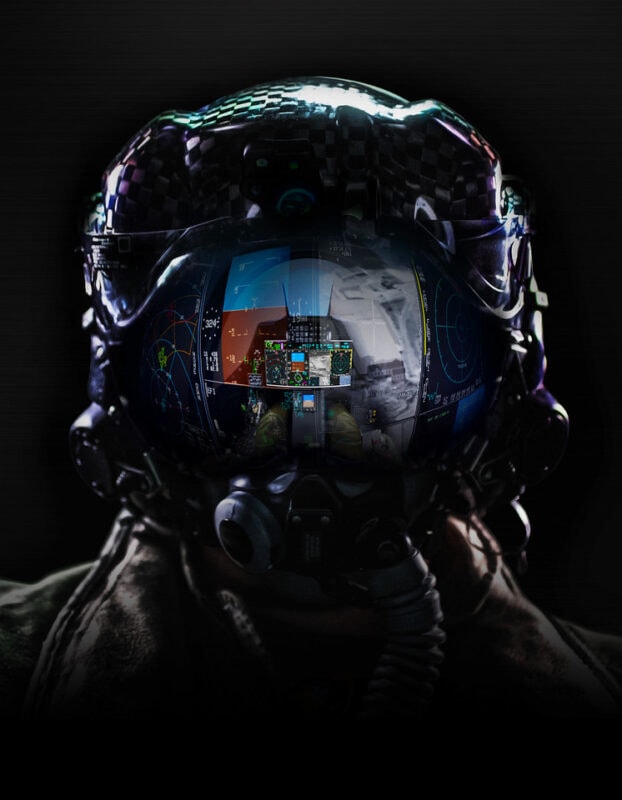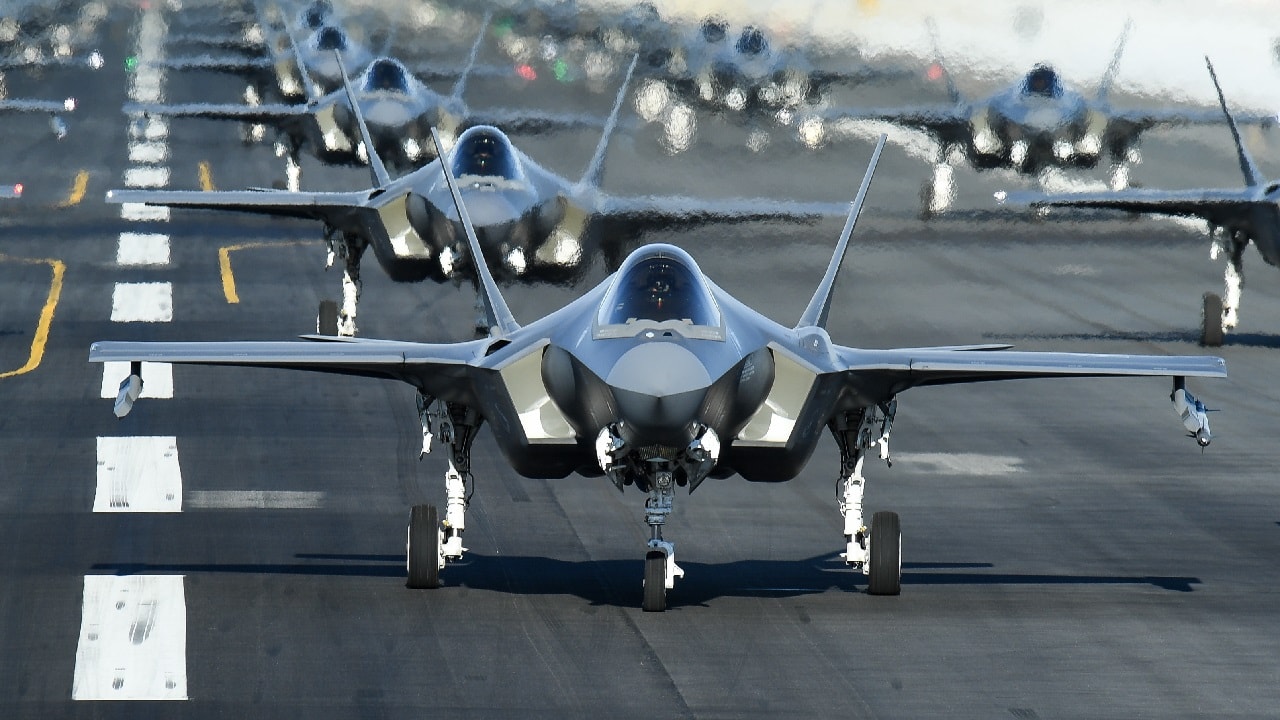The F-35 Joint Strike Fighter is one of the most advanced aircraft to ever take to the skies. The stealth fighter jet can fill many roles, but one of the most important ones is its ability to carry and deploy nuclear weapons – something Russia or China most likely can only dream of right now.
The F-35, An Advanced Aircraft
The F-35 Joint Strike Fighter is a fifth-generation stealth multi-role aircraft with three operational versions.
The F-35A is the conventional take-off landing version flown by the U.S. Air Force and most foreign users. The F-35B is the short take-off and vertical landing (STOVL) version flown by the U.S. Marine Corps and the Royal Navy. Finally, the F-35C is the aircraft carrier iteration of the aircraft flown by the U.S. Navy.
The fifth generation fighter jet specializes in six mission sets: Strategic Attack, Close Air Support, Air Superiority, Electronic Warfare, Intelligence, Surveillance, and Reconnaissance (ISR), Suppression Enemy Air Defenses (SEAD) and Destruction Enemy Air Defense (DEAD).
One of the most fascinating pieces of technology on the F-35 is the software that allows the pilot to look at a target, lock it, and launch a munition by just pointing the helmet at the target’s direction regardless of the direction the F-35 is flying.
But what makes the F-35 truly special is its ability to act as a “quarterback” on the battlefield by using its stealth characteristics and advanced fusion sensors to spot and track an enemy aircraft and direct a friendly aircraft, such as an F-15E Strike Eagle or F/A-18 Super Hornet, to it. One F-35 could truly make a difference on the battlefield.
But one of the F-35’s shortcomings is its small internal weapons loadout. With only two internal weapon bays, the fifth-generation aircraft is limited to the number of munitions it can carry and retain its stealth characteristics. The F-35 can carry more weapons, but it would have to be in external hard points that would considerably lessen its stealth.
The F-35 is by far the most expensive project that the U.S. military is working on, with an approximate cost of $1.7 trillion.
Initially, the Department of Defense was planning to buy approximately 2,500 F-35 of all three versions, but now that number is contested as the high price tag of the aircraft has forced the Pentagon to rethink its purchasing approach. But the U.S. military isn’t the only buyer of the F-35. Close to 20 countries have bought, ordered, or expressed interest in the fifth generation aircraft.
The F-35 and Nuclear Weapons
The F-35’s fifth-generation stealth capabilities make it almost invisible to ground and air radar, enabling the aircraft to engage ground, naval, and air targets undetected from very long distances. In a nuclear scenario, that would make the F-35 the ideal aircraft to deploy a nuclear weapon.
The Air Force has been working on clearing the F-35 for nuclear operations. Last year, the aircraft reached another milestone when two F-35As successfully deployed a test version of the B61-12 thermonuclear bomb.

F-35 Helmet. Image Credit: Lockheed Martin.
But not all F-35s will be cleared for nuclear operations. The Pentagon has stated that once the platform has qualified for nuclear missions, only the specific Air Force squadrons that are tasked with the nuclear mission will be specially configured.
1945’s New Defense and National Security Columnist, Stavros Atlamazoglou is a seasoned defense journalist specializing in special operations, a Hellenic Army veteran (national service with the 575th Marine Battalion and Army HQ), and a Johns Hopkins University graduate. His work has been featured in Business Insider, Sandboxx, and SOFREP.

